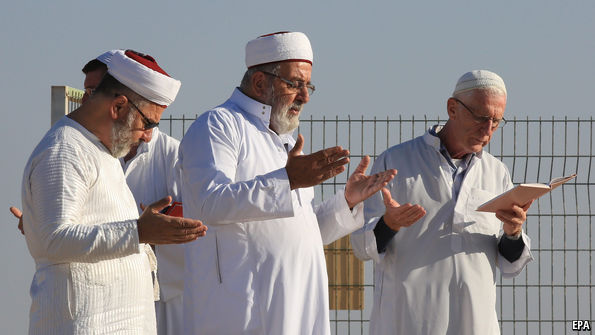In Samaritan literature, the split from the southern kingdom is traced back to the time of Eli, the priest at the time of Samuel (1 Sam 1—2). In the literature of the southern kingdom, the split is dated later, to the 8th century exile of the northern kingdom (2 Kings 17). The other nine tribes all became considered as apostate by the Samaritans.
Samaritan worship was based at a Temple on Mount Gerizim, a site which is referred to at Deuteronomy 11:29 and Joshua 8:33. This is a mountain near to modern-day Nablus (previously Shechem), on the West Bank. The Samaritans considered Mt Gerizim to be the highest and oldest mountain of the world (but it is 881m high, less even than the neighbouring mountain of Ebal, at 951m).
The temple was destroyed in 110 BCE during the aggressive expansion of the Hasmonean kingdom (based at Jerusalem). The destruction of the sanctuary and the city on Mount Gerizim deepened the rift between Samaritans and Jews.
For Jews during the Second Temple period, 2 Kings 17:24-41 explained the origin of the Samaritans. After the Assyrians sent the inhabitants of the northern kingdom into exile in 722 BCE (2 Ki 17:1-6), they resettled the area with pagans from other nations (2 Ki 17:24). These people, of course, brought their own religions. But the Assyrians recognised the need for these new inhabitants to worship the ancestral god(s) of the land, and so they sent exiled priests back to the land to instruct the people of the ancestral religion (2 Ki 17:25-28).
Read the article in Insights Magazine by John Squires (Presbytery Minister (Wellbeing) for Canberra Region Presbytery).

